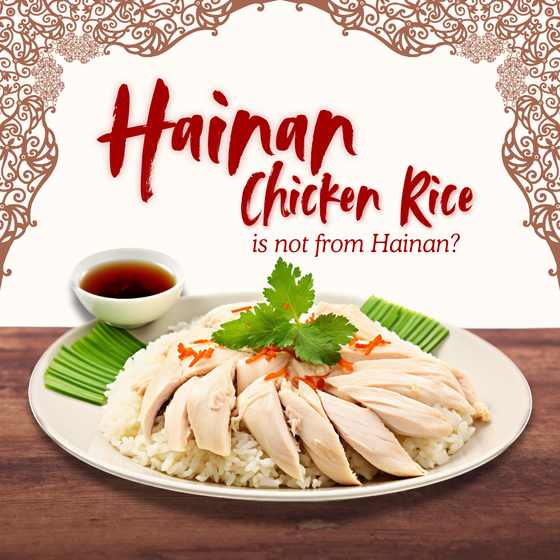7 Types of Mixing Bowls
May 15, 2017

|
Material |
Best for |
Pros |
Cons |
|
Glass |
Bowl for marinating fruits, vinegar. |
- Non-reactive, meaning it won’t chemically affect the taste, color or the texture of the food - Mircrowavable - Some tempered glass bowls are more durable and can be used in oven and even in freezer |
- Glass can be more sensitive to temperature - Its slippery sides make it hard to beat egg whites into foam
|
|
Ceramic |
Marinades usually have at least one ingredient that could interact with a reactive bowl, therefore ceramic or glass is best. |
Decorative look, attractive enough to double as serving pieces
|
Ceramic is prone to chipping, cracking and breaking |
|
Copper |
Best to beat egg whites as tiny quantities of copper ions react with the egg white to stabilize the mixture |
Beautiful and classic
|
One of most expensive mixing bowls you can get
|
|
Plastic |
Toting salads and other dishes to a picnic or potluck |
Inexpensive, lightweight, virtually unbreakable |
- Might melt when in contact with hot surfaces - Can stain or absorb strong odour like garlic |
|
Wood/Natural Material |
Best for salad, as the wood gets seasoned over time and adds flavour to each subsequent salad |
Warm, natural look and feel |
Might not provide smooth, nonporous surface that you’d want for mixing up doughs or batter |
|
Stainless Steel |
Does a good job of whipping and stabilizing the egg whites. Great for mixing batter for cakes, pie filling, melting chocolate over a bain-marie |
- Generally lightweight and inexpensive - Easily found at kitchenware stores - Durable and resists reaction to acidic food, but not up to 100% |
Poor heat transfer. Thinner stainless steel might result in hot spots that cause uneven heat distributed
|
|
Silicone |
Its flexibility is the greatest advantage. Collapsible, making food preparation neater in the confined spaces |
Temperature-proof, non-stick, easy to clean, collapsible, microwave- and dishwasher-safe. |
- Not everyone likes the swishy, rubbery texture of silicone - It can retain the odours of pungent foods |
Tips from The Spruce & Savory Experiments
Leave a comment
Comments will be approved before showing up.
Also in News

Hainanese Chicken Rice is not from Hainan?
August 22, 2025
Did you know, despite the name, the version we eat in Singapore didn’t exactly come from Hainan?

Fried Chicken & Freedom: Honouring Juneteenth Through the Foods That Tell Its Story
June 16, 2025
As we celebrate Juneteenth, let’s remember: dishes like fried chicken carry stories — of oppression, resistance, and ultimately, freedom. Sharing them is a way to honour the past while keeping cultural memory alive.

Zongzi: A Delicious Lucky Charm
May 07, 2025
Wrapped in leaves, filled with luck. More than just a snack, it’s a bite of history!
Subscribe
Sign up to get the latest on sales, new releases and more …
Recent Articles
-
Hainanese Chicken Rice is not from Hainan?
August 22, 2025
-
Fried Chicken & Freedom: Honouring Juneteenth Through the Foods That Tell Its Story
June 16, 2025
-
Zongzi: A Delicious Lucky Charm
May 07, 2025
-
The Story Behind Cap Go Meh: A Festival of Light and Unity
February 07, 2025
-
Chinese New Year Essentials Munchies and Their Auspicious Meanings
January 27, 2025
-
Pantry Glow-Up for CNY! 🧧🍊🌟
January 09, 2025
-
The Essential Trio of Chinese Cuisine: Ginger, Garlic, and Spring Onions
December 10, 2024
-
Discovering Suppengrün: The Heart of German Soups and Stews
November 21, 2024
-
Thai-Inspired Meal Prep: The Magic of the Trio
November 07, 2024
-
Mastering Mirepoix: The French Flavor Foundation
October 30, 2024
Categories
- 3
- adult-friendly
- alegacy
- Alegacy Aluminium Cheese Slicer
- Alegacy Candy Fry Thermometer
- Alegacy Decorating Bag With Assorted Tubes
- alegacy egg slicer
- alegacy elite slicer knife
- Alegacy Hardwood Rolling Pin
- alegacy lemon squueze
- Alegacy Polyethylene Cutting Board
- Alegacy Stainless Steel Pizza Cutter with Wooden Handle
- alternative
- aluminium foil
- art
- Asparagus Peeler
- bake pizza
- bakeware
- bakeware singapore
- baking
- Baking Mat
- baking paper
- Baking Tools
- Baking with cornflour
- ball bearing
- balls
- banana split bowl
- bar
- bar set
- basting
- bat
- beautiful
- beauyhack
- blades
- blog
- Boning Knife
- brandy butter
- bread
- brownies
- bunny
- cake
- cake mould
- Cake Moulds
- Cake Stands and Turn Tables
- cake tin
- candle fix
- carnation
- carving
- cauliflower
- cheese
- Cheese Knives
- cheesecake
- cheesy witchy fingers
- Chef's Choice 430 Diamond Hone Knife Sharpener
- Chef's Choice Manual Sharpener For Serrated Knife
- Chef's Knives
- children
- chocolate
- chocolate lover
- Chocolate Moulds
- chocolatecraving
- christmas
- classic
- clean and neat slices
- cleaning
- cling wrap
- clingfilm
- clingwrap
- cocktail
- cocktail shaker
- cons
- convenient
- cookie spoon
- cookware
- Coriander Cured Salmon
- Corkscrews
- cream cheese brownies
- Cupcake Silicone Mould
- Cups
- Curved Oval Shape
- cutlery
- Cutting Boards
- cutting cake
- cutting utensil
- dailyhack
- dailylife
- De Buyer Blue Steel Frying Pan
- de Buyer Blue Steel Frypan
- de Buyer Crepe and Pancake Pan Non-Stick
- De Marle
- de marle baking mat
- De Marle Baking Mat - SILPAT
- decor
- decorator
- detox
- differences
- dilemma
- Dining ware
- diy
- drinks
- durable
- easy recipe
- ecard
- Egg Crackers/Cutters
- Egg Poacher
- Eggs
- end of year
- everything nice
- extension
- fall
- fancy
- flower
- food prep
- food service
- foodwrap
- foodwrapz
- fruitcake
- fun
- garnish
- ghost
- glass
- glasses
- gloves
- greaseproof paper
- greetings
- guide to knives
- halloween
- Hamburger Press
- hand cheese grater
- hardwood
- health concern
- healthy eating
- healthy pizza
- height
- home
- homemade
- household
- Ice Bucket
- Ice Cream
- Ice cream bowls
- ice cream scoop
- icing spatula
- innovative
- jigger
- kid-friendly
- king metal stainless steel
- King Metal Stainless Steel Cake Stand 13x3¼"
- King Metal Stainless Steel Colander With Pipe Handle
- King Metal Stainless Steel Measuring Cups
- kitchen
- kitchen hacks
- kitchen items
- Kitchen Shears
- kitchen tools
- kitchenware
- Knife
- Knives
- LACY'S
- ladder
- latex
- Layonnaise
- lemon
- Libbey
- Libbey Wine Glasses
- Libbeys
- lifehack
- light meal plan
- loaf pans
- long lasting
- manicurepro
- Marcato Ampia Noodle Machine
- Mashed Potatoes
- Matfer
- Matfer Beechwood French Rolling Pin
- Matfer Chocolate Mould
- Matfer Exopan Non-Stick Kouglopf Mould
- meat thermometer
- Meat Thermometers
- melon
- metal
- mice
- mince pies
- mixing bowl
- modern
- mother day
- motherday
- mould
- muffin pan
- nailart
- new
- no bake
- non-stick
- nonstick
- offerings
- oreo ball
- oreo recipe
- outdoors
- overindulging on food
- owl
- paderno
- Paderno Bluesteel Pizza Pan
- paderno brandy/cognac warmer
- Paderno Chocolate Mould
- Paderno non-stick loaf pan
- Paderno Oval Hamburger Press
- Paderno Silicone Mould
- Paderno Stainless Steel Casserole Pot
- Paderno Stainless Steel Sauce Pan 2 Handles
- Paderno Stainless Steel Tall Sauce Pan
- Paderno Vacuum Pump Wine Preserver
- pancake pan
- pantry pursuits
- parchment paper
- party
- Pasta Machine
- Pastry Bag
- Pastry Mat
- perfect dinner
- picnic
- pizza recipe
- plastic
- plastic bag wrapper
- plasticwrap
- plate
- Plates
- polycarbonate
- pool
- Potato Masher
- potato ricer
- Pots
- professional
- promotion
- properties
- pros
- pumpkin
- recipe
- recipe sharing
- recipes
- remove blackheads
- ribbed
- roast
- roast beef video
- roasting essentials
- roasting pan
- rolling pin
- rolling pins
- rotating cake stand
- Roul'pat
- Round Stainless Steel Basket/Strainer
- routine
- Royal Steel Stainless Steel Crab/Lobster Fork 8"
- Royal Steel Zinc Alloy Crab/Lobster Cracker
- royal white new bone
- Royal White New Bone Chinese Tea Pot with Lid
- rubbermaid
- rubbermaid icing scaper
- rubbermaid scraper
- rubbermaid stepstool
- safety
- salad in jar
- salt
- sauce pan 2 handles
- saucepan
- savoury
- self baking
- serrated edge
- Set of 4
- Set of 6
- shaker
- Silicon Mould
- silicone
- Silicone Bakeware
- silicone baking mould
- Silicone Moulds
- simple
- singapore
- slicing knife
- slide cutter
- snack
- snacks
- spaghetti holder
- spatula
- spice
- stainless steel
- Stainless Steel Champagne Stopper
- Stainless Steel Frying Pans
- Stainless steel potato ricer/masher
- Stainless Steel Pots
- Stainless Steel Ricer
- stencil
- stencils
- stepladder
- stepstool
- sugar
- sukkuri
- Tanita Digital Scale With Clear Bowl
- thank you
- the right knife
- Thermohauser Letter Decorating Pastry Bag
- thermometer and winemeter
- tips
- top
- vacuum pump wine preserver
- valentine
- vanilla cupcakes
- versatile
- Victorinox
- Victorinox Forged Chef Boning Knife
- Victorinox Forged Chef Boning Knife 15 cm
- vinyl
- watermelon
- Wine Glasses
- wine rack
- wings
- witch
- ZipBag
